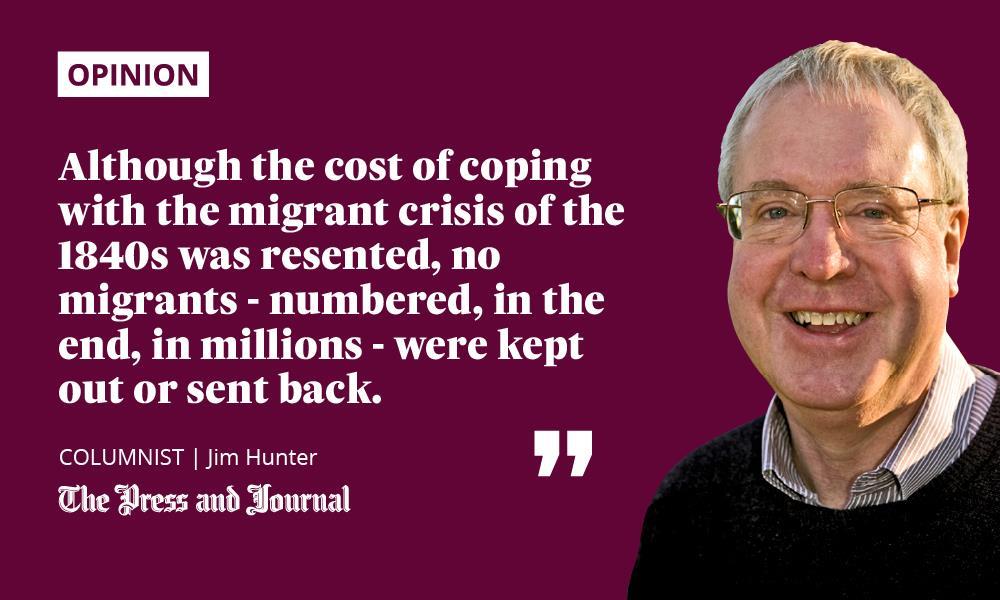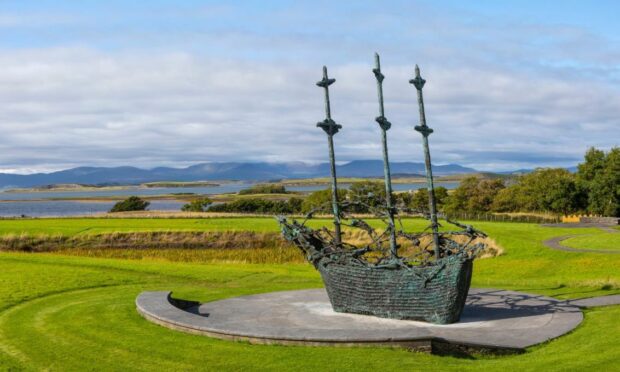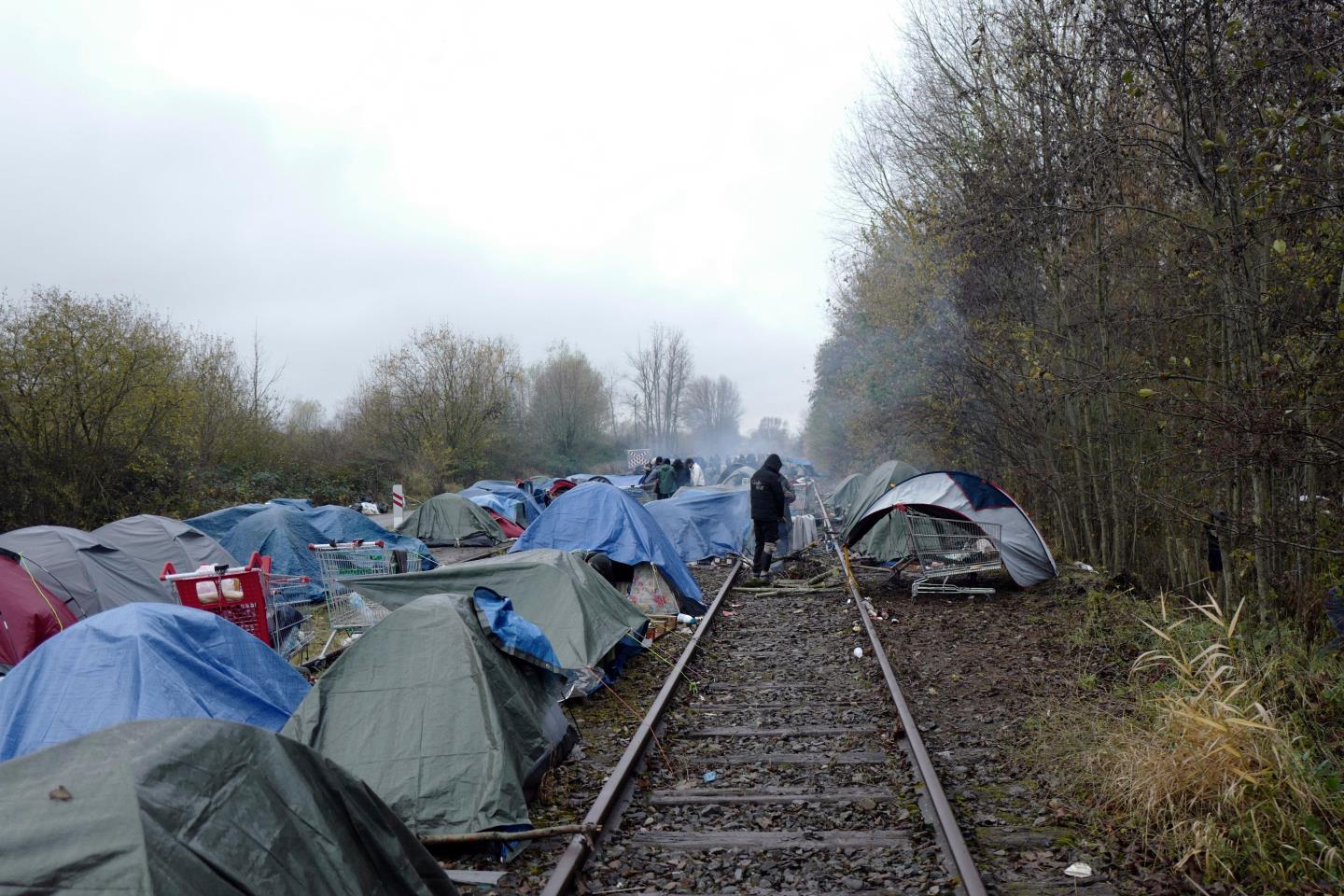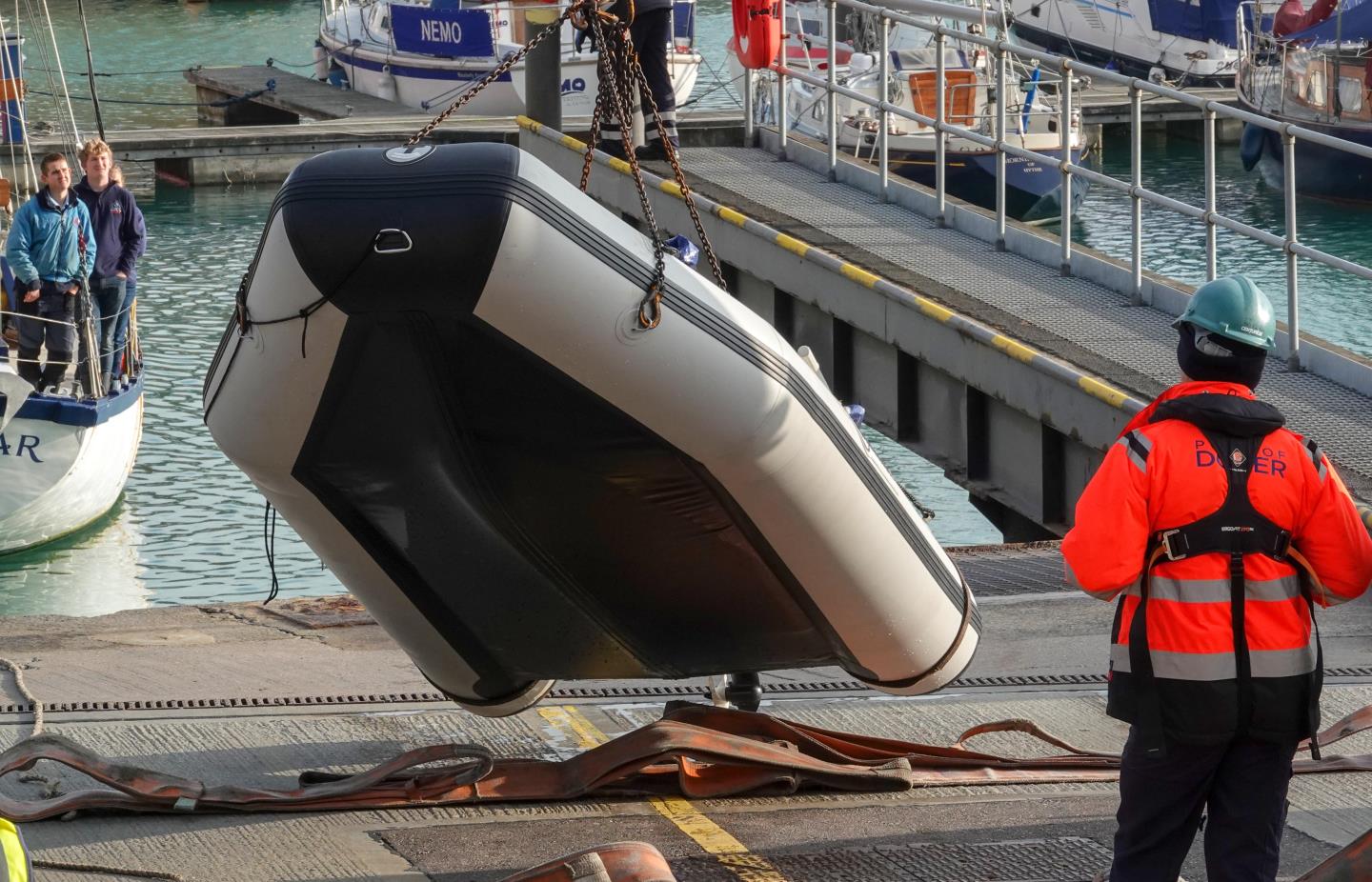Sometimes the migrant corpses came ashore in ones and twos. Sometimes, as on the Atlantic shores of islands like Vatersay and Islay, in hundreds.
More often, they’d be consigned to the ocean so far from shore as never to be seen again.
They were fleeing hunger and dire poverty these folk. Many of them had been deliberately made homeless – their communities emptied of every inhabitant, their houses unroofed and levelled to the ground.

And, so, they’d taken to the sea, because they felt themselves to have no option but to make a desperate attempt to get to a place that might hold out some prospect of security, a livelihood and a better life.
They weren’t fleeing Iraq, Iran, Afghanistan, the Yemen or Sudan, these people. And, far from trying to gain entry to the United Kingdom, they were doing the opposite. Overwhelmingly, they were Irish, Highland, Hebridean. The frequently emaciated and usually ragged victims of famine and clearance. And the countries they were trying to get to were the USA and Canada.
People treated like cargo
The sailing ships those migrants boarded in the 1840s were the worst of vessels. Ships that had “come down”, as the saying went, to the business of transporting North American timber to the UK. When newer, they might have handled high value cargoes – cargoes that had to be kept dry. It mattered little, however, if timber got wet. Which is why a leaky ship, no longer fit for other purposes, might fetch up in the timber trade.
But once a timber cargo was unloaded on a British wharf, what was to take its place for the return voyage? No manufactured goods or anything of that sort could be entrusted to a vessel come down to the timber business.
The answer was to turn to what is nowadays called people trafficking. Holds emptied of raw timber were crammed with crudely constructed bunks that were, in turn, crammed with families who’d invested the last of their cash in this once-and-for-all opportunity to flee a country with no use for them.
A west to east Atlantic voyage in the sailing ship era might take as little as two or three weeks. An east to west voyage, made against prevailing winds, could take as many months.
On vessels that came to be called ‘coffin ships’, three or four migrants out of every 10 met death while on the ocean
Conditions in overcrowded, unventilated, lightless holds – especially in bad weather when hatches were battened down and migrants had no access to fresh air – were beyond appalling. Children in particular died of nothing more complex than dehydration caused by prolonged seasickness.
And, with sanitation consisting of nothing other than overflowing wooden buckets, infectious disease – usually typhus, sometimes cholera – could run rampant. On vessels that came to be called “coffin ships”, three or four migrants out of every 10 met death while on the ocean.
Past migrants suffered but today’s are left to rot
Thousands of other deaths followed at the “quarantine station” the Canadian colonial authorities established on Grosse Île, an island in the St Lawrence estuary, some 40 miles downriver from Quebec City.
Here, in the 1840s, infected migrants were housed in tents and sheds in an attempt to keep disease out of upstream urban centres. Here, when researching migrant history, I came across brief mentions of Anne and Ellen MacRae – two little girls who, in 1847, arrived at the end of a journey that started in the Highland parish of Lochalsh.
Ellen and Anne’s mother and father were dead; buried at sea or in one of the mass graves still to be seen around a Grosse Île inlet called Cholera Bay.
When at Grosse Île, I thought a lot about those girls. About how it would have been to be parentless in a strange country where, being Gaelic-speaking, Anne and Ellen would have understood no more than a word or two of English, and nothing at all of the Québecois French spoken all around them.
Taken from Grosse Île by a Canadian charity, Ellen was adopted by a Quebec family, Anne by another hundreds of miles away in the US. They wouldn’t, it’s virtually certain, see one another again.
Although the cost of coping with this migrant crisis of the 1840s was resented by the Canadian and American authorities, no migrants – numbered, in the end, in millions – were kept out or sent back.
But what was never attempted in the supposedly unenlightened 19th century is now standard here in the UK. That’s why today’s equivalents of Anne and Ellen are left to rot in makeshift camps in France and Belgium – or to drown in the chilled waters of the English Channel.
Jim Hunter is a historian, award-winning author and Emeritus Professor of History at the University of the Highlands and Islands


